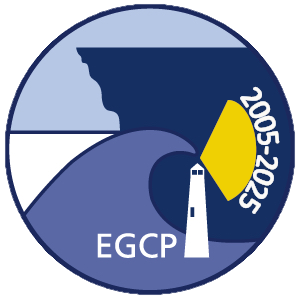Become an EGCP Volunteer
Become a Volunteer and help your local coastal community...
Enhance your Professional Development: Gain valuable work experience with a diverse set of tasks based on your learning goals and career objectives.
Make a Meaningful contribution: Create impact on the community through your work on real projects and involvement in sustainable tourism.
Gain invaluable Networking Experience: During your internship you will be a part of a creative and dedicated team.
If you like to volunteer, then please get in touch with EGCP to see how you can play a role in managing the Aberdeen and Aberdeenshire coastline.
EGCP Volunteering opportunities include:
The issue of
INNs Invasive Non Native Species is a major threat to coastlines around the world and while the East Grampian Coast has not been effected to date, vigilance is needed.
EGCP wishes to work with a students to actively look for invasive species at ports and harbours by using settlement panels.
This would involve placing plastic panels, designed to be ideal structures for growing marine life, in the harbours.
At set times these would be removed and the marine life growing on them identified, with an emphasis on recording Marine Invasive Species.
Volunteering Opportunities
We are looking for volunteers who can help deliver the following tasks:-
• To carry out whale dolphin and wildlife effort based surveys and engage with the public
• To monitor Marine Invasive Non Native Species (INNS) by the use of settlement panels
Cetacean Rangers
The East Grampian Coast is one of Europe’s whale and dolphin hotspots. To make the most of this it is proposed that EGCP recruits a team of Cetacean Rangers who will:
- Deliver at least three (3) effort-based cetacean watches a week to record: conditions, sightings, other wildlife and visitor numbers
- Write a Blog post giving details of sightings etc. for the EGCP website and social media
- Report cetacean sightings as they happen via social media
- Report results of the surveys to the Seawatch Foundation, Orca, WDCS and any other groups who can use the results
- Engage with the public informing them about cetaceans, our work, volunteering opportunities etc
- Help the public to see cetaceans using optical equipment that we supply.
Location
Much of the focus for cetacean watching has been Aberdeen Harbour. It is suggested that this project uses the full range of the coast including watches at Kinnaird Head, Fraserburgh. Peterhead. The Bullers of Buchan, Collieston, Balmedie, The Don Mouth, Cove, Newton Hill, Stonehaven, Fowlesheugh, Inverbervie and St Cyrus.
Timing
Late May until September but with the option of continuation.
Equipment
EGCP has a small number of binoculars and telescopes that can be used along with hand sanitiser etc.
Roles
EGCP will:
Provide training in health and safety, cetacean survey methodology, cetacean identification engaging the public and use of social media
- Provide a risk assessment and method statement
- Arrange publicity
- Arrange permission to hold events and liaise with landowners/managers
- Supply equipment and leaflets
- Arrange logistics
- Recruit and co-ordinate volunteers
- Regularly attend events at the start until things are fully up and running
Volunteers will:
- Complete and submit survey forms
- Inform members of the public about cetaceans and wildlife
- Hand out forms, leaflets etc
- Write daily blog posts and update social media
- Look after equipment and ensure it is regularly sanitised
- Ensure that health and Safety requirement are being met for their own safety and for members of the public
Risks
Visitor Numbers:
It is possible that, left unrestricted, this with will prove very popular. In the past EGCP has had over 300 people attending a very similar event causing issues regarding parking and volunteers being overwhelmed, so we may need to arrange a booking system such as Eventbrite. This would also give us access to contacts and allow us to send a follow-up email suggesting a possible donation. For this reason at least 2 volunteers should be present.
Health and Safety:
A full risk assessment will be developed, and training given.
Competition:
This project will sit alongside other similar ranger events and the relevant services will be contacted.
Marine Invasive Non Native Species
This project builds on the knowledge and experience of the Solway Firth Partnership who have been running a similar scheme for a number of years.
It will involve placing settlement panels in harbours in late spring and retrieving them in the autumn. Marine life grows on the panels which can then be identified and quantified.
EGCP will:
- Build and deploy the panels following the Solway Firth methodology
- Liaise with the harbours
- Arrange for collection and work with the volunteers to identify species growing on the panels
- Share and publicise results, NESBREC will include the results on their data base for future use
- Recruit and train volunteers
- Agree risk assessment.
Volunteers will:
Identify species present on panels and report findings
In order to proceed please contact me with times that would are available for a chat.
Please do not hesitate to contact me - Ian Hay - if you require further information: 07971149117




